Nothing on Earth is more mysterious than what lies beneath the ocean waves. From deep sea creatures we have yet to discover, to marine life we’ve known about for a long time, yet still struggle to fully comprehend, the ocean is filled with thousands of wonders. Here are just 10 of the most stunning sea creatures we know about.
Mimic Octopus
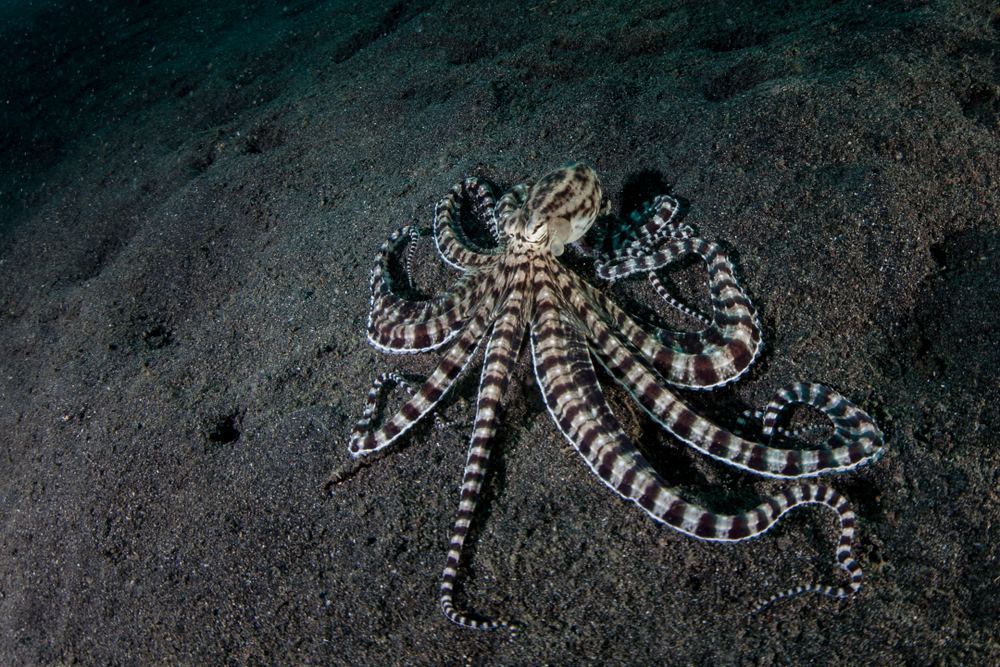
The mimic octopus has the ability to take on the appearance and mannerisms of a recorded 15 different species, making it the ultimate trickster of the animal world. Officially discovered just twelve years ago, the mimic octopus swims in the tropical waters of South East Asia, feeding on small fish and crabs. Like several other species of octopi, the mimic can change its color and texture to match its surroundings. However, what truly sets it apart is just how good of an actor it really is when trying to avoid being eaten and to luring in potential meals. By changing its color, appearance, and the way it swims, a mimic octopus can take on the appearance of such things as sea snakes, lionfish, jellyfish, flounders, stingrays, sea shells, and more.
Gulper Eel
A prime candidate for being the most bizarre looking creature on the planet, the gulper eel grows to lengths of three-to-six feet (1-2m) and has a massive, pelican-like mouth that allows it to eat prey bigger than itself. The gulper eel is the very definition of a deep-sea wonder, living at depths up to 10, 000 feet (3000m). Despite the size of the mouth, however, it has very small teeth, so generally the gulper eel does not try to bite off more than it can chew. Like the anglerfish, the gulper eel uses light to lure prey, in this case with the tip of its tail
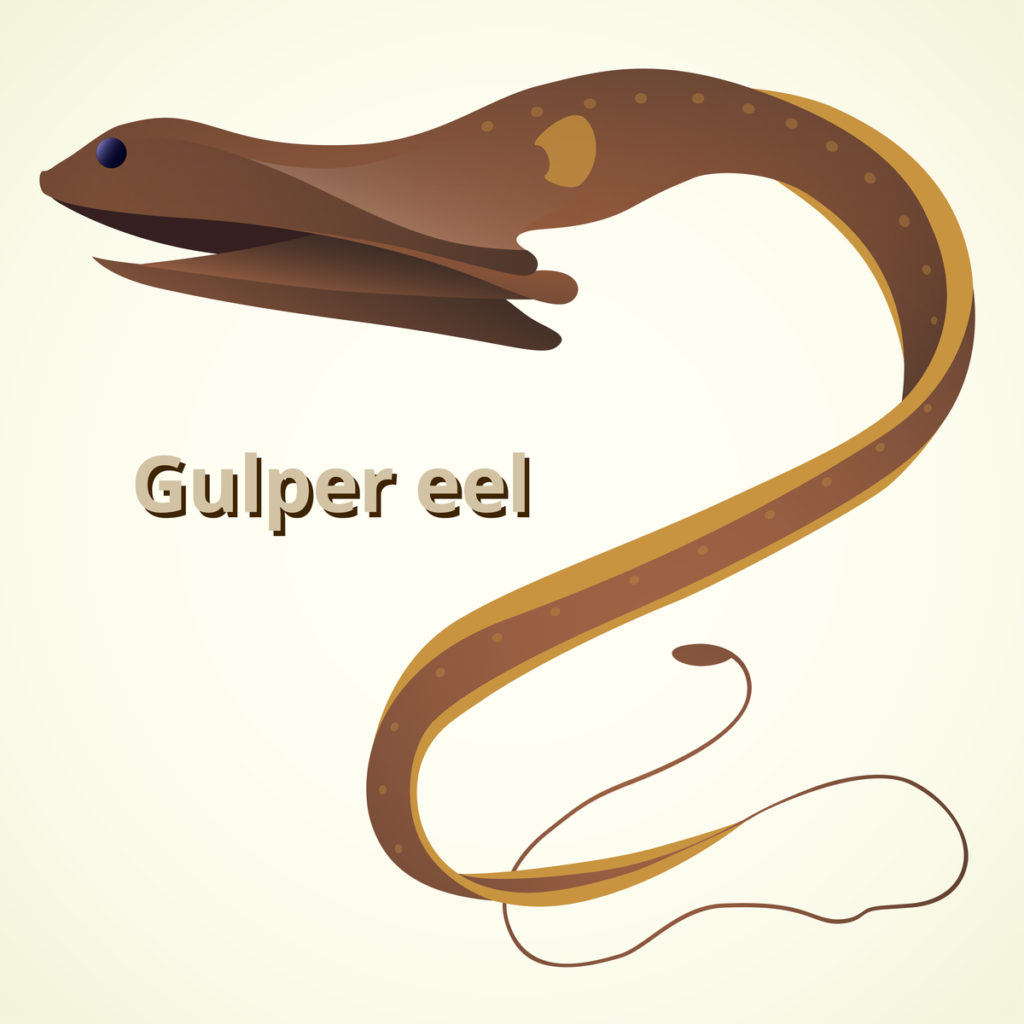
Not much is known about the gulper eel as its love for dark, deep waters makes it a challenge for marine biologists to study.
That’s pretty strange, but…
Not all memorable fishing trips involve catching fish. In light of those chance encounters with unexpected catches, here are some of the strangest things ever caught while fishing.
Japanese Giant Spider Crab
We tend to think of crabs as little crustaceans that can fit in the palm of our hand, with some exceptions, of course. Well, the Japanese giant spider crab is more than an exception: it breaks all the barriers of what a crab can grow into. With a leg-span of up to 13 feet (4m) and a body the size of a basketball, this crab looks like the world’s biggest spider. Fortunately, despite how deadly it looks, the giant spider crab is not overly aggressive. It walks along the ocean floor with its eight legs, while the two large pincer limbs up front are used to catch prey. Below is rare footage of a giant spider crab shedding its skeleton from inside a tank.
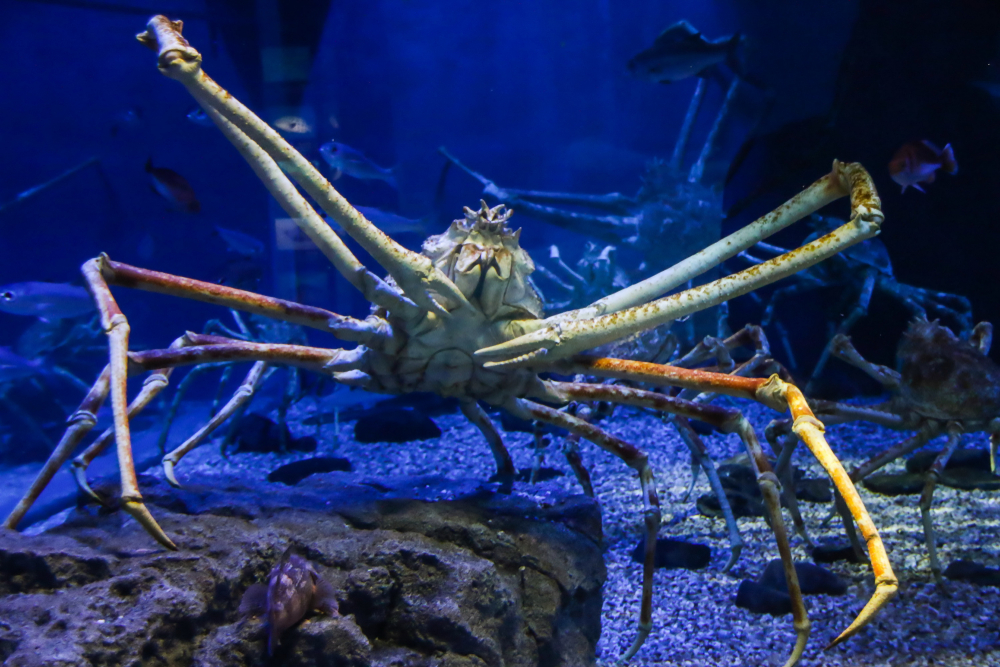
Deep-Sea Anglerfish
Perhaps the most famous of all deep-sea fish, the anglerfish gets its name for the way it hunts its prey. The anglerfish lures in food with its elongated dorsal spine, waving it around as the tip lights up to attract unsuspecting fish towards its large mouth and sharp teeth. Females are the larger of the two genders and can grow to be about a yard in length. The weirdest part about the anglerfish, however, is not the way it looks or hunts, but how it reproduces. Male anglerfish, which grow no bigger than the size of a golf tee, lose the ability to digest as they grow older. The remedy: biting onto a female’s side. The two become fused together as the skin of the male’s mouth and the female’s skin around the bite dissolve and meld into each other. The male anglerfish loses all its vital organs in the process and essentially becomes a parasitic sperm dispenser that stays attached to the female.
Colossal squid
Not to be confused with the more famous giant squid, the colossal squid is actually larger with shorter tentacles that are lined with swiveling hooks, as opposed to the suckers and small teeth its cousin has. This mysterious creature has rarely been caught on film as it generally never comes to the surface, living at depths of at least 2000 meters (6560 feet) in the Antarctic region of the world. Though scientists do not know for sure, it is believed colossal squids can reach lengths of up to 14 meters (46 feet), making it the largest known invertebrate on the planet. They also possess the largest eyes in the world, growing as wide as a foot in diameter.
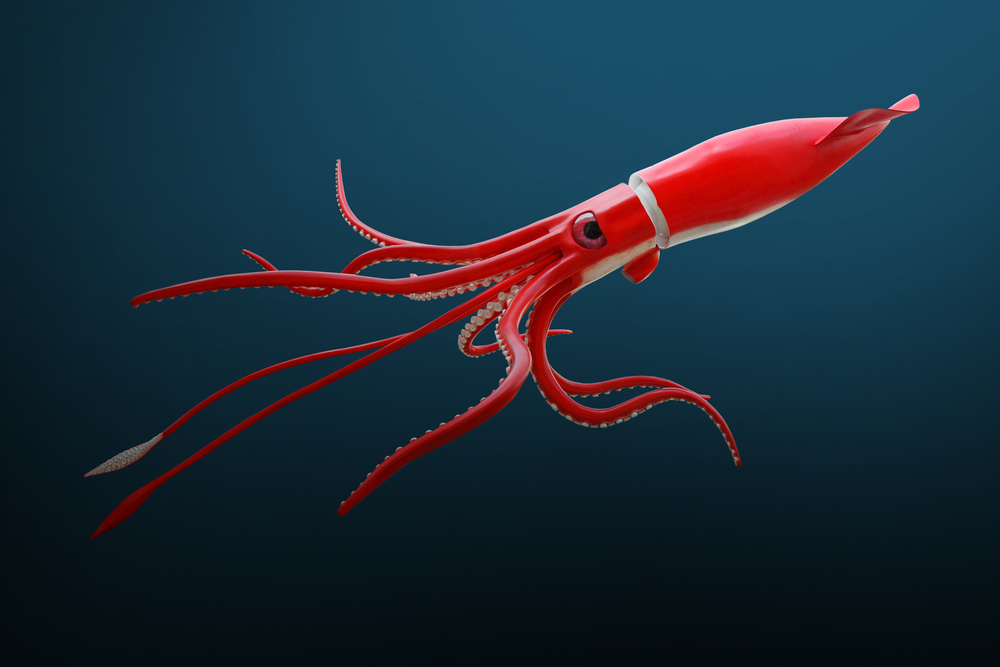
Prehistoric fish that are still alive today!
While the dinosaurs are long extinct, the same cannot be said for some species that lurked beneath the ocean depths. In honor of those fish species that can keep on, keepin’ on, here are the top 10 most amazing prehistoric fish still alive today.
Sparkling Enope Squid (aka Firefly Squid)
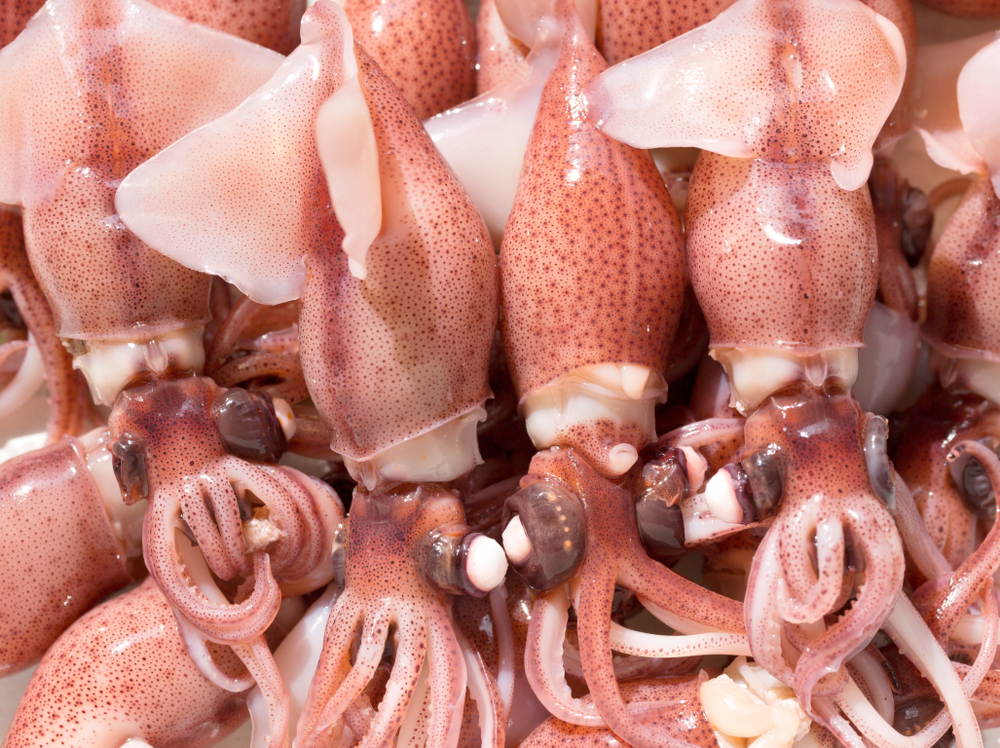
Size isn’t everything in the ocean world, just ask the firefly squid. Growing no longer than three inches in length (seven centimeters), the firefly squid earns points for putting on one of the most beautiful displays on the planet. A firefly squid is covered with thousands of light-emitting organs known as photophores that can blink in unison or separately. Firefly squids are found in the West Pacific Ocean, most famously off the coast of Japan where countless amounts gather to spawn in the spring months. Tourists come from miles around to witness the brilliant light display put on by these sea creatures.
NOAA
Goblin Shark
There are many weird-looking sharks out there, but the strangest of them all may be the goblin shark. The most defining characteristic is its long, trowel-shaped snout, an electro-sensitive organ used to replace sight as this shark tends to swim at depths hundreds of meters deep. Growing to a length of up to 14 feet (4.5m), the bizarre-level increases for the goblin shark as its skin is not the typical grey color seen with other sharks, but is a more pinkish-hue instead. As if it wasn’t already a throwback to prehistoric fish, the most frightening aspect of the goblin shark is that its jaws protrude from its face when biting its prey, compensating for its long snout.
Sea Wasp
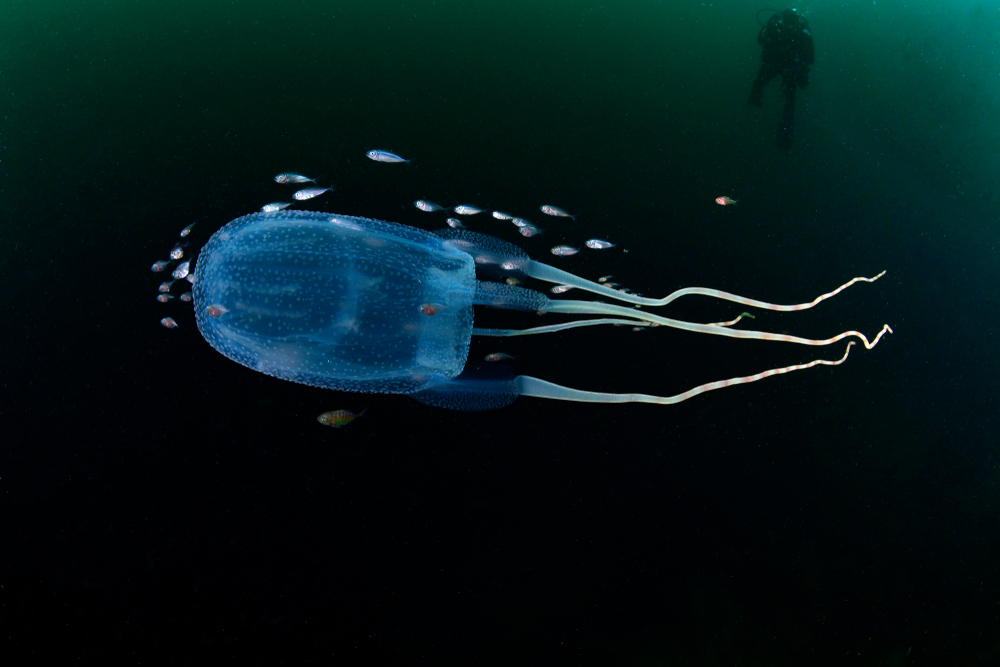
When you think of the deadliest animal on the planet, creatures like great white sharks, tigers, or venomous snakes may come to mind first given their hold on pop culture. However, it is the sea wasp that reigns supreme, the most venomous creature on the planet. A type of box jellyfish, the sea wasp has enough venom to kill 60 adult humans. A fatal sting from its tentacles can kill a human in as little as three minutes. To make matters worse, even if you aren’t stung with a large dose of venom, the pain is so excruciating it has been known to cause shock which can lead to drowning. Commonly found off the coasts of Australia, sea wasps are more responsible for deaths on the continent than snakes, sharks, and salt water crocodiles put together.
Blobfish
This aptly named fish makes its home off the coast of Australia and Tasmania, living at depths of roughly 800 meters (2600 feet). Given the depths of water it swims in, blobfish do not possess swim bladders that most fish have – an organ that gives buoyancy, but is inefficient at deeper pressures of water. Instead, its skin is made up of a gelatinous mass that is slightly less dense than water, allowing it to float above the ocean floor with little hassle. These fish grow to lengths of about 12 inches (30 centimeters), feeding primarily on sea urchins and mollusks that float by. The blobfish is also nicknamed the ‘Ziggy fish” for its resemblance to the popular comic strip character.
Tongue-Eating Louse
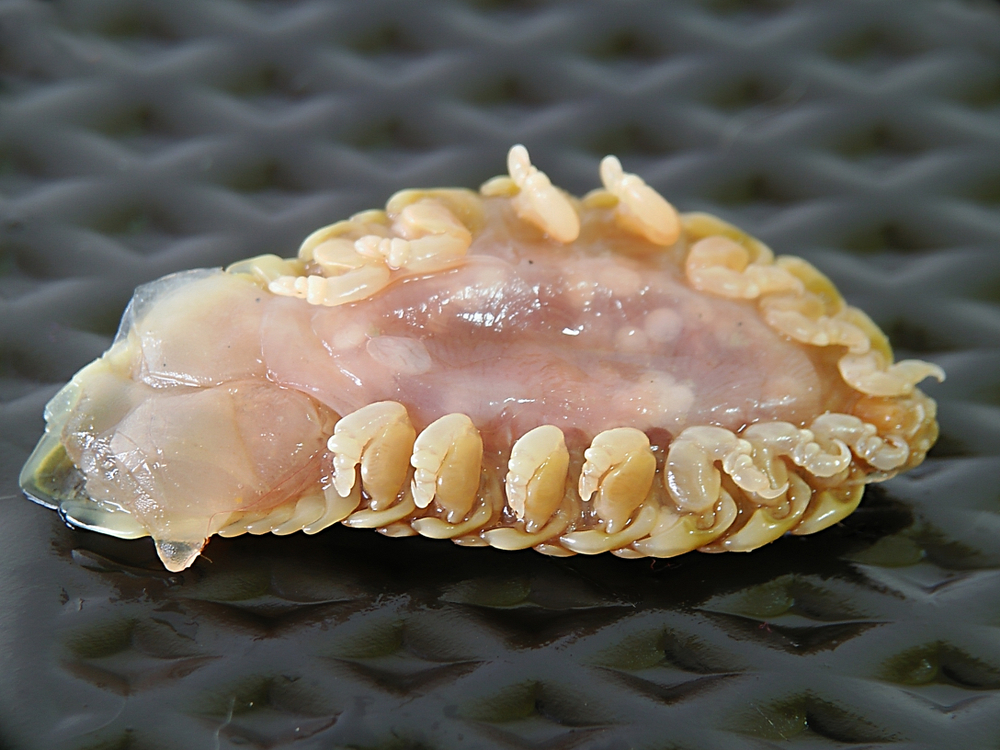
The hands-down winner for the title of being the oddest and grossest creature in the ocean goes to the tongue-eating louse. This parasitic crustacean latches onto the tongue of its primary victim, the spotted rose snapper, and doesn’t let go. Once it does, the louse sucks the blood out of the tongue, until the organ wastes away. When that happens, the louse essentially becomes the new tongue, attaching its body to the stub of the old organ. It then feeds on the remains of food that the snapper doesn’t completely swallow.
Amazingly, the snapper isn’t harmed too much by the entire process as it continues to live and feed after the louse makes a permanent residence. Though the spotted rose snapper is the louse’s main target, the crustacean has been found sporadically in several other species.
Conclusion
This list barely scratches the surface of the amount of stunningly beautiful, deadly, or downright strange marine life out there in the ocean. As underwater technology gets better, more and more species will be discovered. Who knows, perhaps the colossal squid isn’t the biggest invertebrate out there, or maybe there are weirder looking creatures than the blobfish. On second thought, the blobfish will probably hold the crown indefinitely.






